Killed for their teeth - trade with raw tusks in Africa
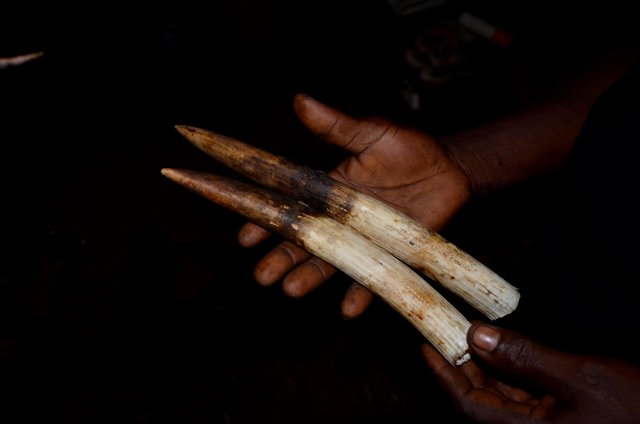
Both bush- and forest-elephants are primarily targeted for their ivory bearing tusks nowadays. The tusks are transformed upper incisives with a steady growth trough the lifetime. Tusks are embedded deep in the upper jaw with a nervous cavity inside, which you can imagine as similar to human's milk dentition.
Therefore it is not possible to remove preventively the tusks to wild elephants to protect them against poaching.
Nowadays the illegal ivory trade in Africa comprises mostly raw tusks which are being exported from the continent in entire length or cut in smaller pieces, allowing the trafficker to dissimulate them when smuggling.
Back in the days of the early African colonisation and historical ivory trade led my Swahili traders for instance, mainly adult males were targeted since their tusks were the biggest. 20 kg or even double of ivory on every tusk was not an exception and the hunter focused only on the most profitable individuals. Today however, due the massive reduction of the elephant population and the overall reduction of the mean tusk size the poachers commonly kill also female or subadults. With the modern efficient weapons it is easy to kill elephants fast and the rising ivory price is a strong incentive to unselectively kill every single elephant. The mean tusk size seized on the international illegal market is getting drastically lower every year, with an exception in the years following the international ban on ivory trade in 1989. The chart with the ivory size date will be presented in my next post.
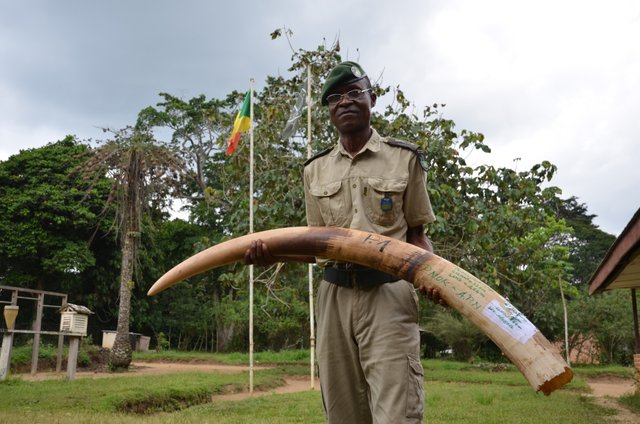
The seized forest elephant tusk in the Odzala-Kokoua National Park in Congo (managed by African Parks). This tusk weighting over 14 kg belonged to an adult male and had served him as a tool to dig in the earth (minerals, rooms), cut bark from the trees, break shells of nuts, compete with other males and impress females. All the length from left to the last brown „ring“ near the „PNOK“ inscription was the outer part, the whole rest towards the right was deep in the elephant's skull.
Congo, 2013.
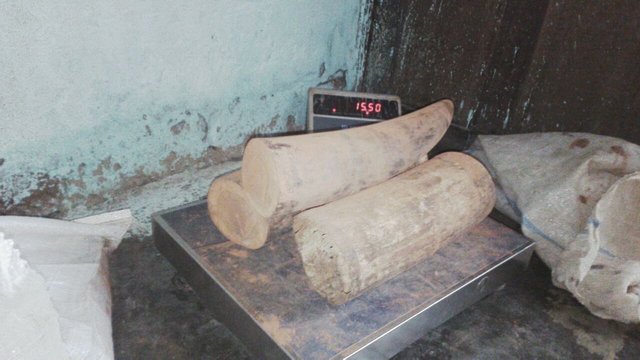
A 15 kg tusk from a forest elephant cut in 3 pieces as seen by an ivory trafficker on the scale. A network of traffickers in SE Cameroon depletes the remaining forests by using a vast community of local hunters (often from the so-called Pygmy ethnicities) which are ready to pull the trigger. This ivory was destined for east-Asian market, leaving the continent through ports in Nigeria.
Cameroon, 2016.
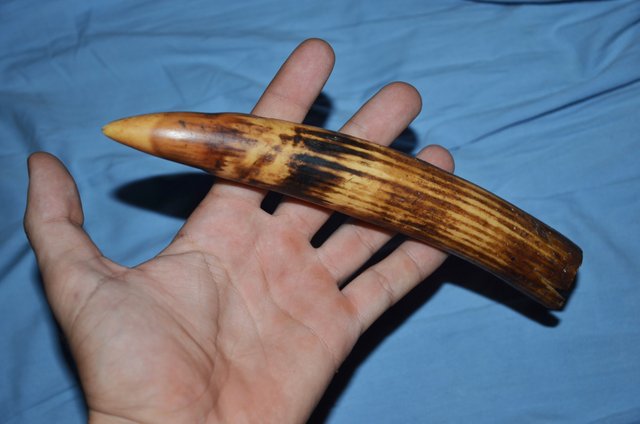
A baby elephant tusk as seen by a poacher and trafficker in Cameroon. Finding tiny tusk such this one is not exceptional on the black market. In this particular case an elephant lost the life for approximately 10 USD which the poacher would get from his patron for such a little prey.
Cameroon, 2013.
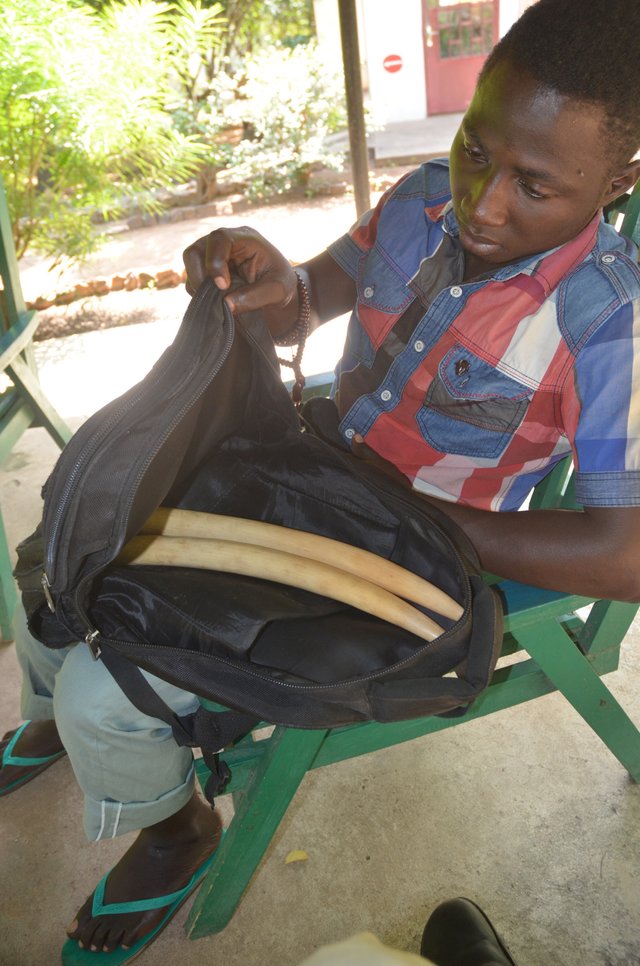
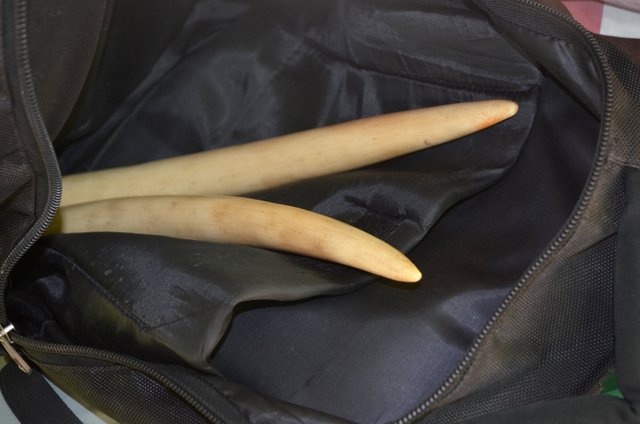
A young ivory trafficker presenting a little sample of the merchandise in northern Cameroon. Ivory belonging to the bush elephant whose population is massively dropping since few years in the region.
Cameroon, 2015
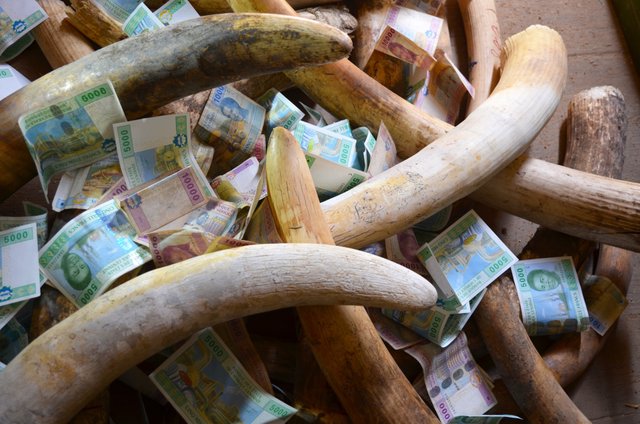
Bush elephant ivory seized on poachers or found in the park from natural deaths by wildlife rangers in the Zakouma National Park in Chad. This ivory (over 1 ton in total) has been demonstratively burnt in 2014 by the Chadian president as a signal to zero tolerance to poaching and trafficking.
Chad, 2013
Arthur F. Sniegon, June 2018
Founder and Coordinator of @save-elephants
www.save-elephants.org
E-mail: [email protected]
FB: save.elephants.org